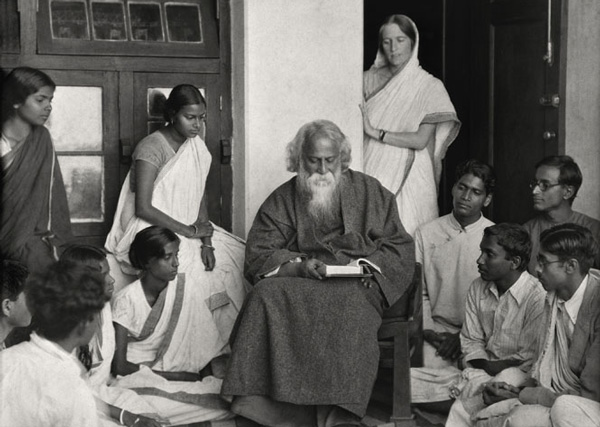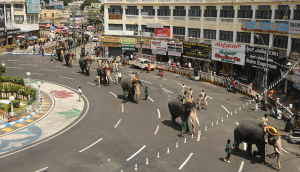City of Joy to Genius: a new book that maps the world's 'genius cities' picks Kolkata

Eric Weiner decided to bypass India some years ago while trying to map happiness on the globe for his book The Geography of Bliss. But Weiner didn't give India a miss for his next book. This one book is about mapping genius. And the stopover? Kolkata.

Weiner made seven stops across the world for The Geography of Genius - at Athens, Hangzhou, Florence, Edinburgh, Vienna, Silicon Valley and Calcutta, as the author refers to Kolkata, to understand genius. Not tragic tales of solitary genius. But genius found in clusters. The role of cultures in nurturing creativity - from the ancient world civilisations to the modern cafes of the Silicon Valley.
And, of course, the genius of Calcutta's 'addas', which has creativity coursing through its veins. Calcutta, which had a sewage system and gas lamps before Manchester. Calcutta, which was the first city to use fingerprints in criminal investigations. Calcutta, which published more books than anywhere else in the world save London.
Also read: 3 million people voted these the best books of 2015. Have you read them?
Weiner, a journalist and travel writer, embarked on the journey to examine the connection between one's surroundings and one's most innovative ideas - often wondering, "what was in the air, and can we bottle it?"
The genius of Calcutta
It was difficult to understand, let alone bottle the genius of Calcutta. It took Weiner a while to even understand the dynamics of an 'adda'. Or get used to the grime and dirt of the city.
In the chapter dedicated to the city, "Calcutta: Genius is Chaotic", Weiner succeeds in camouflaging his frustration with remarkable wit:
"Clearly, traffic signs are taken as mere suggestions. A red light means you might want to consider stopping. Or not. Oh, and the one-way streets change directions once a day. (That's a very interesting time of day.) As for lanes? Bffft. Those are for other, less creative drivers. There is no place on earth more creative than a Calcutta intersection. Let me be blunt: Calcutta is an ugly city. It is, though, a lovable ugliness. It is the ugliness of the platypus or the armadillo, or a toothless old lady who melts your heart."

Over time Weiner warms up to Calcutta, its residents and its chaos. The chaos that spurs creativity. The hypothesis for Weiner's travelogue.
Also read: Destroy the record books: Adele's new album just broke all sound barriers
Weiner realises that places of genius are never easy. That the Bengal Renaissance did not happen because Calcutta was a nice place to live. It happened because it wasn't a nice place to live. The creative flourishing was, as it always is, a reaction to a challenge.
Along the way he also explains why geniuses thrive in mess and chaos (Beethoven was a total slob), why we often do our best thinking while walking (even if on a treadmill), how oysters played a pivotal role in the Scottish Enlightenment, and how the Renaissance may never have happened if not for the plague.
The beauty of 'addas'
He even begins to understand the nonlinear beauty of 'addas' (freeform conversations). "Topics require no transitions. They arrive unannounced, and sometimes with great ferocity, like the monsoon rains," he notes.
The golden age of Calcutta - the Bengal Renaissance - was roughly between 1840 and 1920. The city was one of the world's great intellectual capitals. There was the Renaissance Man himself - Rabindranath Tagore, Nobel Prize winner. Bankim Chattopadhyay, a clerk by day and novelist by night. Henry Derozio, who spearheaded the Young Bengal movement. Swami Vivekananda, who introduced Americans to spirituality. Jagadish Bose, a physicist who showed the world the line between living and nonliving matter is not as sharply defined as we think.
Weiner takes forward his hypothesis of chaos spurring creativity with Tagore's example.
"Tagore was a restless soul, and once said the reason he traveled so much was in order to 'see properly.' Yet time and again he returned to Calcutta. This makes sense. Creative people thrive on ambiguity, and you don't get any more ambiguous than a city such as Calcutta in a country such as India. Tagore didn't dodge this ambiguity. He embraced it."
Also read: 2 million dollars & a film deal: Garth Hallberg is the unknown author you need to rea
Weiner argues that the genius of the Indo-Western mind lies not in the Indian or Western lobes but in the spaces between. "What emerged in Calcutta in the late nineteenth century was an interstitial genius. The genius of the hyphen."
He extends a scientific analogy to add weight to his hypothesis.
"We thrive in 'chaotic', stimulating environments. This is true physiologically as well as psychologically. Rats raised in stimulus-rich environments develop more cortical neurons, the brain cells that enable thought, perception, and voluntary movement. Their brains weigh more and contain higher levels of important chemical compounds compared to rats deprived of stimulation. Our bodies, and our minds, crave not only stimuli but complex, varied stimuli."
Geography of chaos
Apart from Calcutta, Weiner's journey took him to Athens, the birthplace of democracy and other philosophical ideals that still shape our society. Hangzhou, in China, which for several centuries during Europe's Dark Ages flourished as a centre of science and poetry. Florence, which spawned great art during the Renaissance under the Medicis. Edinburgh, where the Scottish Enlightenment spurred many early modern medical advances. Vienna, a centre of music in the age of Mozart and a centre of art and psychology in the age of Freud. And Silicon Valley, the modern answer to these past centres of genius.

Weiner asserts that although one can't always predict a place of genius and thus manufacture such a place, one can still create conditions to increase the likelihood that a place of genius will spring up.
Basically, that societies get the geniuses they support and ask for, so any society that wants to see more genius needs to promote the kinds of conditions likely to create it.
"We have to dismiss our foolish notion that genius only comes from within, and acknowledge that many of the discoveries, innovations, and artistic achievements that have shaped our civilization have sprung from a messy melting pot of influences, and not from a lonely man toiling away in an attic," he says.
Small wonder, then, that Calcutta - chaotic, complex, challenging - answers so thoroughly to the description.
Also read: Survivor as Superhero: why this comic book matters in the battle against rape







![BJP's Kapil Mishra recreates Shankar Mahadevan’s ‘Breathless’ song to highlight Delhi pollution [WATCH] BJP's Kapil Mishra recreates Shankar Mahadevan’s ‘Breathless’ song to highlight Delhi pollution [WATCH]](https://images.catchnews.com/upload/2022/11/03/kapil-mishra_240884_300x172.png)

![Anupam Kher shares pictures of his toned body on 67th birthday [MUST SEE] Anupam Kher shares pictures of his toned body on 67th birthday [MUST SEE]](https://images.catchnews.com/upload/2022/03/07/Anupam_kher_231145_300x172.jpg)






